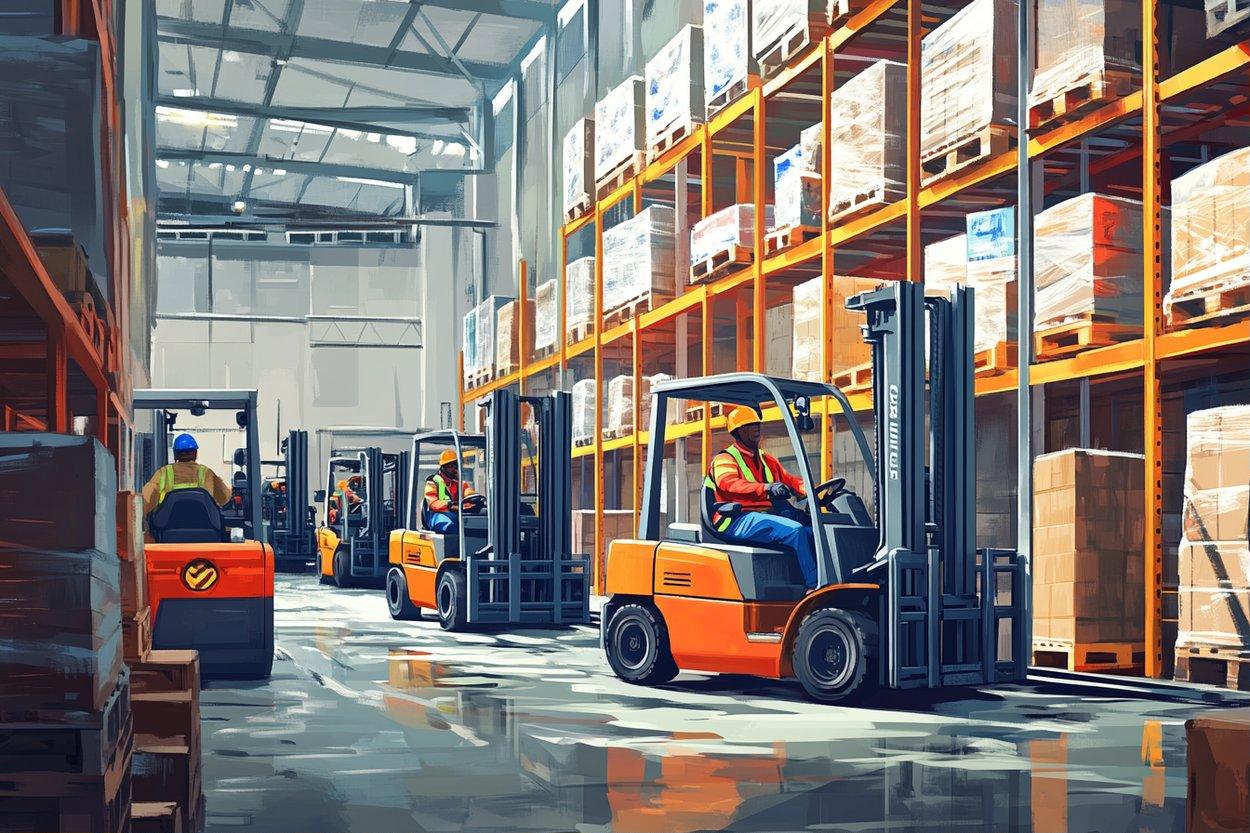Adaptive Warehousing: Reshaping Distribution Landscapes
In an era of fluctuating consumer demands and unpredictable market shifts, businesses are seeking innovative solutions to streamline their distribution networks. Enter adaptive warehousing, a revolutionary approach that combines flexible infrastructure, advanced technologies, and dynamic inventory management to create agile and responsive distribution centers. This emerging concept is transforming how companies store, manage, and distribute products, offering a competitive edge in today's fast-paced business environment.

The Evolution of Warehouse Design
Traditional warehouses have long been characterized by static layouts, fixed storage systems, and labor-intensive processes. These rigid structures often struggle to accommodate rapid changes in inventory levels, product mix, and order fulfillment requirements. As e-commerce growth and omnichannel retail strategies have reshaped consumer behavior, the limitations of conventional warehousing have become increasingly apparent.
The concept of adaptive warehousing emerged as a response to these challenges, drawing inspiration from agile manufacturing principles and lean methodologies. By prioritizing flexibility and scalability, adaptive warehouses can optimize space utilization, improve operational efficiency, and enhance responsiveness to market demands.
Key Components of Adaptive Warehousing
Adaptive warehousing relies on several interconnected elements to create a dynamic and responsive distribution environment:
-
Modular Infrastructure: Adaptive warehouses feature reconfigurable layouts and movable storage systems that can be easily adjusted to accommodate changing product assortments and inventory levels.
-
Advanced Automation: Robotics, autonomous mobile robots (AMRs), and automated storage and retrieval systems (AS/RS) play a crucial role in enhancing operational agility and reducing reliance on manual labor.
-
Intelligent Inventory Management: Real-time tracking systems and predictive analytics enable precise inventory control and optimized stock placement based on demand patterns and seasonality.
-
Flexible Workforce: Cross-trained employees and adaptable staffing models allow for rapid reallocation of human resources to address shifting operational needs.
-
Scalable Technology Infrastructure: Cloud-based warehouse management systems (WMS) and Internet of Things (IoT) devices facilitate seamless integration of new technologies and expansion of capabilities.
Benefits of Adaptive Warehousing
The implementation of adaptive warehousing strategies offers numerous advantages for businesses seeking to optimize their distribution operations:
-
Improved Space Utilization: Modular storage systems and dynamic layout configurations allow for more efficient use of available space, reducing the need for facility expansion.
-
Enhanced Operational Efficiency: Automated systems and data-driven processes streamline order fulfillment, picking, and packing operations, leading to increased productivity and reduced labor costs.
-
Faster Response to Market Changes: The ability to quickly reconfigure warehouse layouts and adjust inventory levels enables businesses to adapt swiftly to seasonal fluctuations and emerging trends.
-
Reduced Carbon Footprint: Optimized space utilization and energy-efficient automation systems contribute to lower energy consumption and reduced environmental impact.
-
Increased Scalability: Adaptive warehouses can easily accommodate business growth and expansion without requiring significant infrastructure investments.
Challenges and Considerations
While adaptive warehousing offers substantial benefits, its implementation is not without challenges:
-
Initial Investment: The upfront costs associated with modular infrastructure, advanced automation systems, and technology upgrades can be significant.
-
Workforce Training: Employees must be trained to operate new technologies and adapt to changing roles within the warehouse environment.
-
Integration Complexity: Seamlessly integrating various automated systems and software platforms can be technically challenging and may require specialized expertise.
-
Change Management: Transitioning from traditional warehousing models to adaptive systems often requires a cultural shift and may face resistance from employees accustomed to established processes.
-
Cybersecurity Concerns: The increased reliance on connected technologies and data-driven systems introduces potential vulnerabilities to cyber threats.
Future Trends in Adaptive Warehousing
As technology continues to evolve, adaptive warehousing is poised for further innovation:
-
Artificial Intelligence and Machine Learning: Advanced AI algorithms will enhance demand forecasting, inventory optimization, and automated decision-making within adaptive warehouses.
-
Augmented Reality (AR) Assisted Operations: AR technologies will streamline picking processes, improve worker productivity, and facilitate real-time inventory management.
-
Sustainable Design: Future adaptive warehouses will incorporate eco-friendly materials, renewable energy sources, and circular economy principles to minimize environmental impact.
-
Collaborative Robotics: The integration of cobots (collaborative robots) will enable seamless human-machine collaboration, further enhancing operational flexibility.
-
Edge Computing: Distributed computing architectures will reduce latency and improve real-time data processing capabilities within adaptive warehouse environments.
Adaptive Warehousing Insights
• Implement a phased approach to adaptive warehousing, starting with modular storage systems and gradually introducing automation technologies.
• Prioritize employee training and change management to ensure successful adoption of new processes and technologies.
• Regularly assess and optimize warehouse layouts based on data-driven insights to maximize efficiency and responsiveness.
• Explore collaborative partnerships with technology providers and logistics experts to stay ahead of industry trends and innovations.
• Consider the potential for multi-tenant adaptive warehouses to share resources and distribute costs across multiple businesses.
In conclusion, adaptive warehousing represents a transformative approach to distribution center design and operation. By embracing flexibility, automation, and data-driven decision-making, businesses can create agile and responsive warehouses capable of meeting the challenges of today’s dynamic marketplace. As technology continues to advance and consumer expectations evolve, adaptive warehousing will play an increasingly critical role in shaping the future of supply chain management and distribution logistics.




